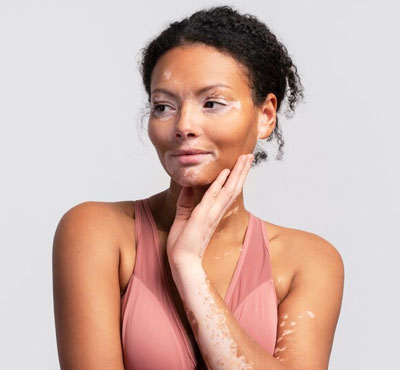Understanding Vitiligo
Vitiligo is a condition where melanocytes, the cells responsible for producing skin pigment, are destroyed or cease to function. Depigmented patches on the skin can appear anywhere on the body. The exact cause of vitiligo is unknown, but it is considered an autoimmune condition in which the body's immune system mistakenly attacks its melanocytes.
This condition can occur in individuals of any age, gender, and ethnicity, though it is much more visible in people who have darker skin tones due to the contrast of color between the colorless spots and the surrounding skin.
Causes & Risk Factors
Vitiligo causes have been studied, but none is known precisely. However, the following are possible reasons for the development of the condition:-
- Autoimmune Response - The body's immune response destroys melanocytes.
- Genetics - If there is a family history of vitiligo or other autoimmune diseases, then a higher chance of causing the disease condition.
- Environmental Triggers - Factors related to stress, sun-burning, chemicals, etc., often trigger or may worsen the condition in vulnerable people.
- Oxidative Stress - The free radical and antioxidant imbalance within the human body often causes the condition.
Symptoms & Types of Vitiligo
This skin disease can be mainly recognized by the occurrence of white patches. There are mainly two types of classification for this disorder:-
- Segmental Vitiligo - It is associated with one-half of the body only and usually happens in younger persons. It can stabilize after several years.
- Non-Segmental Vitiligo - This type is the most common type in which the skin is affected on both sides symmetrically and often continues to grow over time.
Treatment Options for Vitiligo
There is no permanent cure for vitiligo, but several treatments exist to deal with the disease, bring back the pigments, and make the skin look more acceptable. In Dermavision - The Skin Clinic, we have multiple treatments available depending upon the severity and nature of the disease that may suit a patient's needs.
- Topical Treatments - Topical corticosteroids and Calcineurin inhibitors are the commonly used drugs in treatment for decreasing inflammation and stimulating melanocyte activity. It is quite useful in the early phases of the disease.
- Phototherapy - nbUVB is the phototherapy that has widely been accepted to treat vitiligo patients. Ultraviolet light in controlled amounts may be provided to the skin region affected to activate the melanocyte function and cause repigmentation in such areas.
- Excimer Laser Therapy - This is the latest treatment; it applies a laser light focused specifically on small spots of vitiligo. It has an excellent success rate for localized depigmentation and may be added with other treatments to improve the effects.
- Skin Grafting - Skin grafting is an operation for stable vitiligo. It entails transferring healthy pigmented skin from other parts of the body to the areas affected by vitiligo.
- Melanocyte Transplantation - This is a new surgical procedure where melanocytes are isolated from the patient's skin, cultured in a laboratory, and then transplanted onto depigmented areas.
- Depigmentation Therapy - For those with widespread vitiligo, depigmentation therapy can lighten the remaining pigmented skin to create a more uniform appearance. This is done using topical de-pigmenting agents such as monobenzone.
- Camouflage & Makeup (Hiding Vitiligo Patches) - Temporary coverage is possible with high-quality, water-resistant concealers and skin-friendly makeup, that enhance one's mood to wear it on special occasions or every day, respectively.


